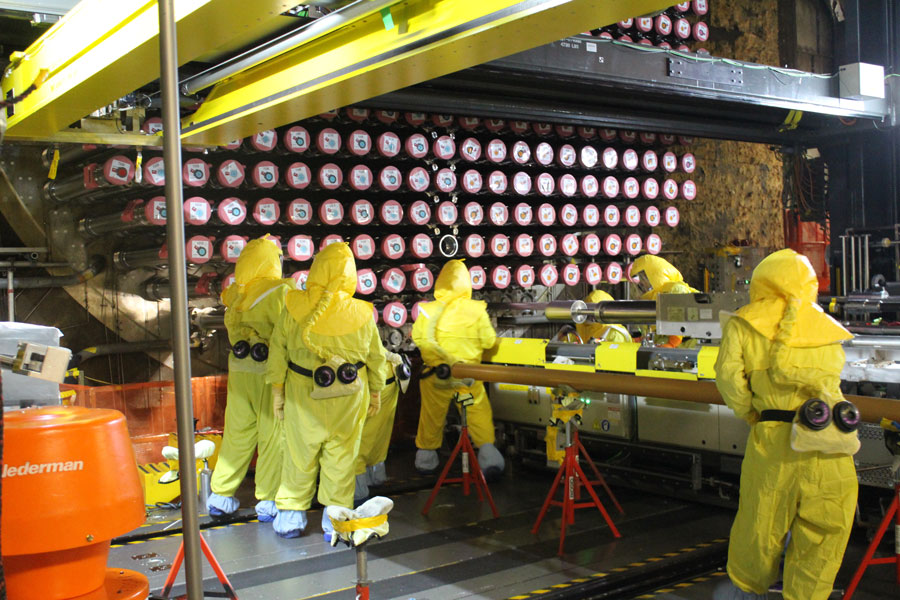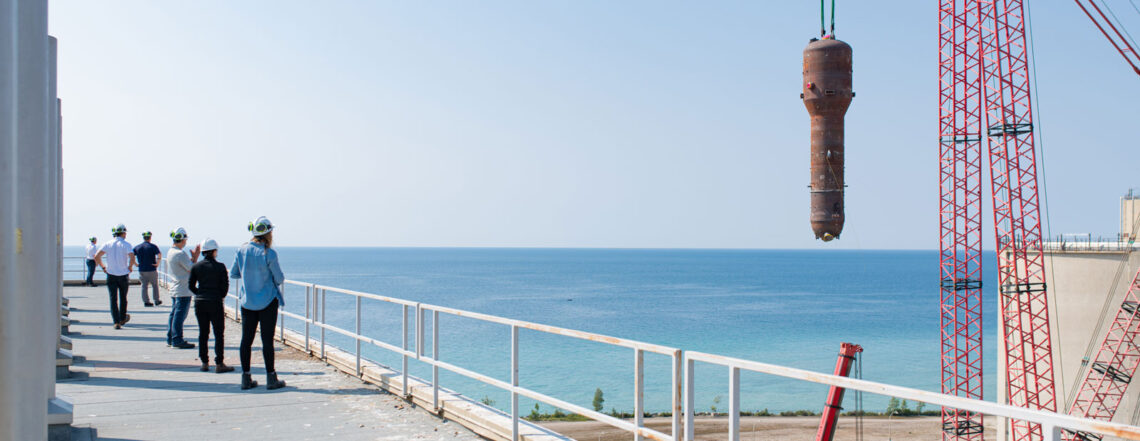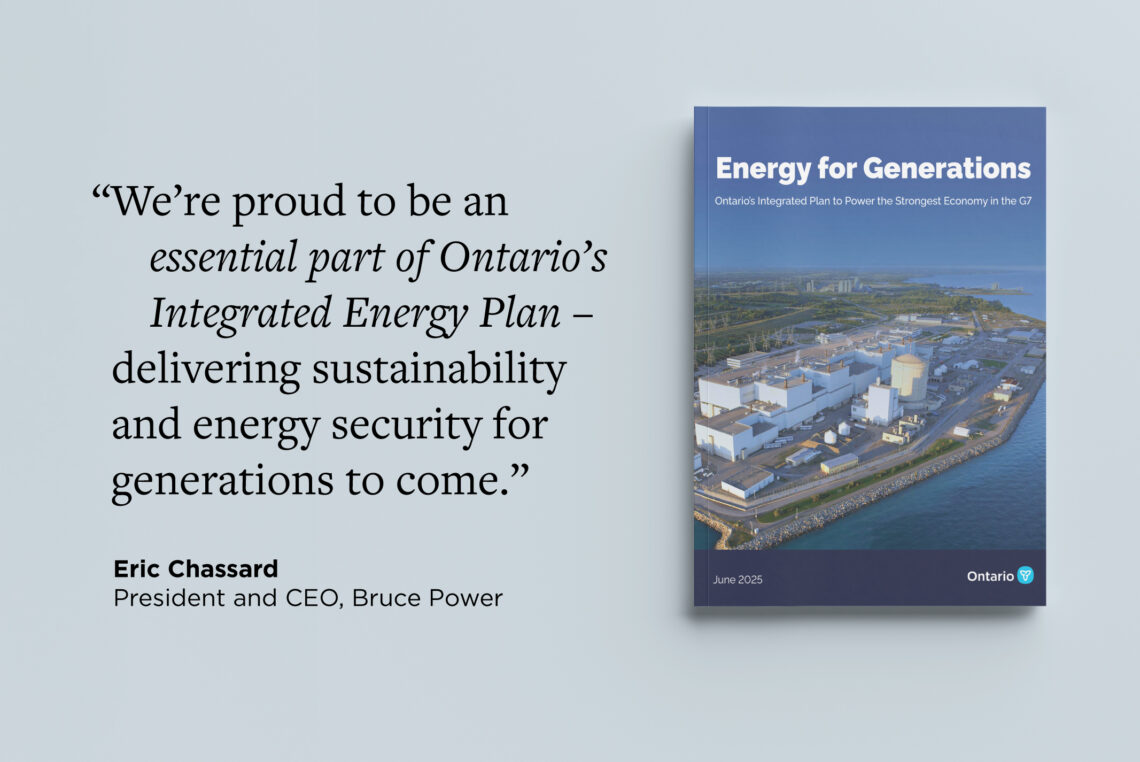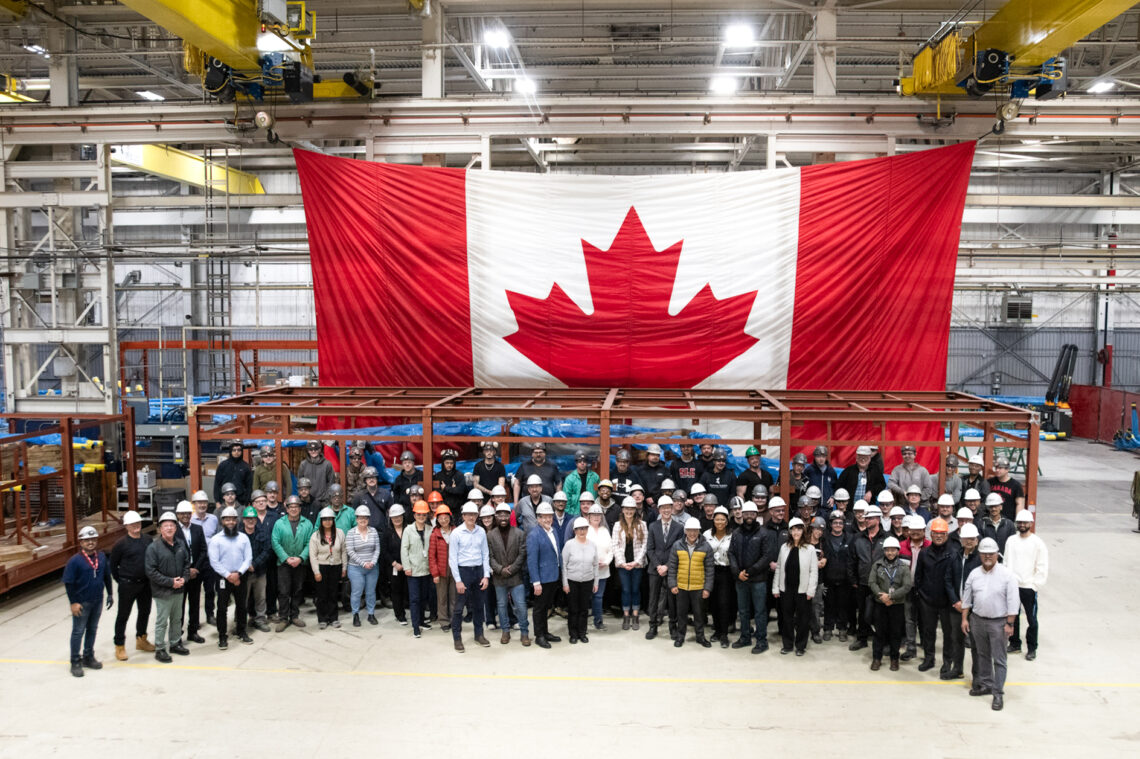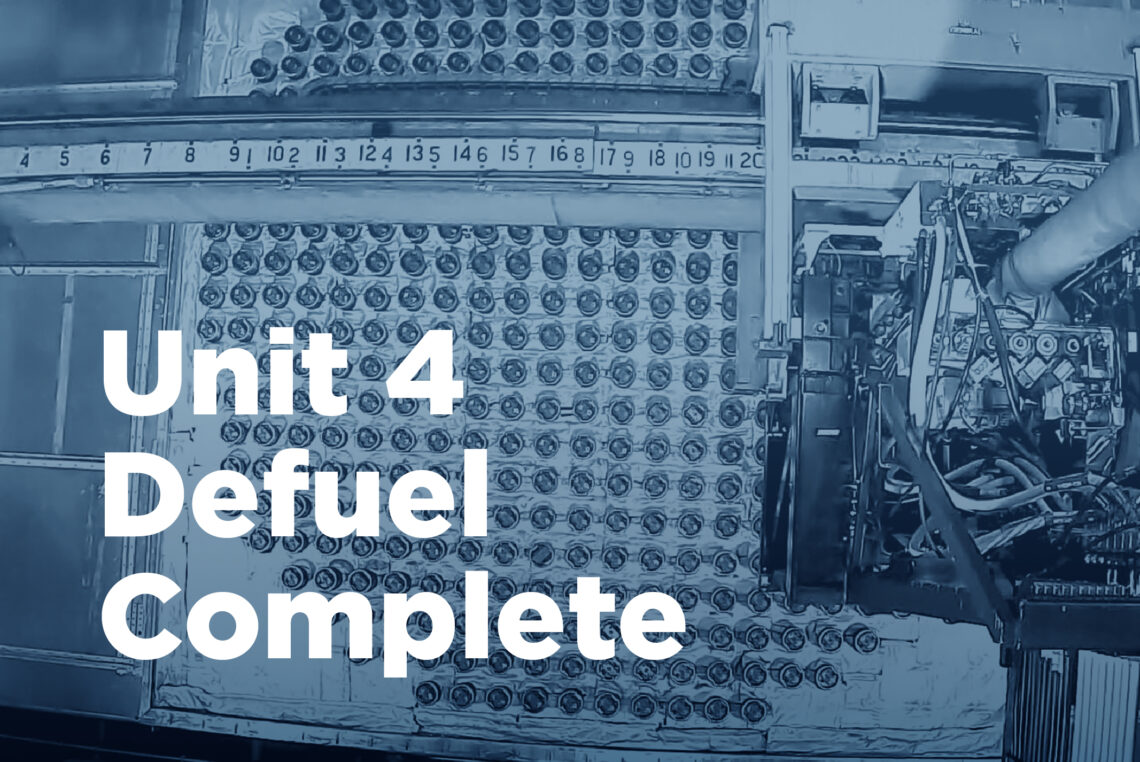In December 2015, Bruce Power reached an agreement with the Independent Electricity System Operator (IESO) to advance a long-term investment program which would refurbish its nuclear fleet and secure the site’s operation until 2064.
The Life-Extension Program started in 2016 and involves the gradual replacement of older systems in the company’s eight reactor units during regularly scheduled maintenance outages.
As part of the Life-Extension Program, Bruce Power is carrying out its intensive Major Component Replacement (MCR) Project. The MCR Project began in January 2020 and focuses on the replacement of key reactor components in Units 3-8, including steam generators, pressure tubes, calandria tubes and feeder tubes.
The program will secure an estimated 22,000 jobs directly and indirectly from operations, and an additional 5,000 jobs annually throughout the investment program, injecting billions into Ontario’s economy.
Approximately 60 supplier partners have also opened offices or manufacturing facilities in Bruce, Grey and Huron counties since 2016 and the majority of these organizations play a role in the MCR Project. Bruce Power and the County of Bruce are working to transform the area into a nuclear energy-inspired economic hub and sustain the company as a world leader in the nuclear sector.ion
Major Component Replacement (MCR) Project
The MCR Project began with Unit 6 in January 2020, continued with Unit 3 in March 2023, and follows with Units 4, 5, 7, and 8. Each refurbishment must be of the highest quality, shorter in duration and ultimately more cost effective than the last.
The life extension of each unit will add approximately 30 to 35 years of operational life, while other investments will add a combined 30 reactor years of operational life to the units. Extending the operational life of the Bruce Power units will ensure Ontario families and businesses have long-term electricity price stability.
DID YOU KNOW
Each one of Bruce Power’s reactors is capable of generating enough low-cost, reliable, safe and carbon-free electricity to meet the annual needs of a city the size of Ottawa.
MCR is so much more than a refurbishment project that will power the province for years to come. It’s a project which will empower people and communities now and into the future.
I am a tooltipMCR: Unit 6 Project Overview
Following its MCR, Unit 6 was declared commercially operational on Sept. 14, 2023, 39 years to the day of its first in service date in 1984. The Unit 6 MCR project was completed with an industry-best safety record for large projects, with thousands of people worked over 24 million hours to complete the work safely, on time and on budget.
Unit 6 will now safely power over 900,000 Ontario homes annually for more than four decades, a period where Ontario’s forecasted demand for energy to almost triple by 2050.
Innovation at Work
Already, lessons learned from MCR6 have been applied in Unit 3’s MCR (MCR3), resulting in industry best performance and safety in defueling and draining the unit at the beginning of the project.
Bruce Power and its partners are also focused on innovation to help deliver performance improvements in each MCR. Bruce Power and Cambridge-based ATS Corporation’s (ATS) Industrial Automation business collaborated on new automated tooling to improve safety, quality, and overall performance.
New Automated Delivery Tables (ADT) have been developed and the first-of-its kind tooling will be the first robotics to work on a nuclear reactor. The new tooling will be operated with Millwrights and Boilermakers to inspect, verify and install hundreds of components on both sides of the reactor face during MCR projects.
DID YOU KNOW
Bruce Power has built facilities on site and in the community to prepare for the MCR Project. Located in Kincardine, the 129,000-square-foot MCR Training Facility is home to approximately 330 office workers and 150 tradespeople. The building includes a two-storey, modern office space as well as a shop area with welding booths and training mock-ups that replicate the environment inside Bruce Power’s reactor vault. This is company’s largest off-site facility constructed to support MCR. On the Bruce Power site, more than 250,000 square feet of buildings have been constructed since 2016.

